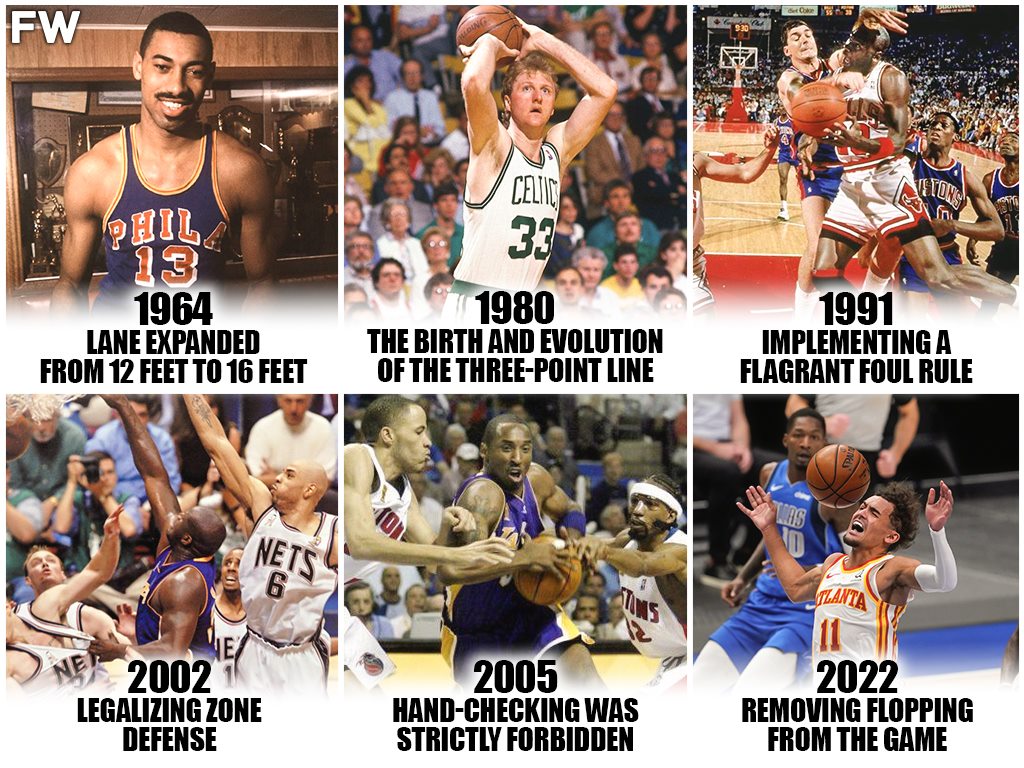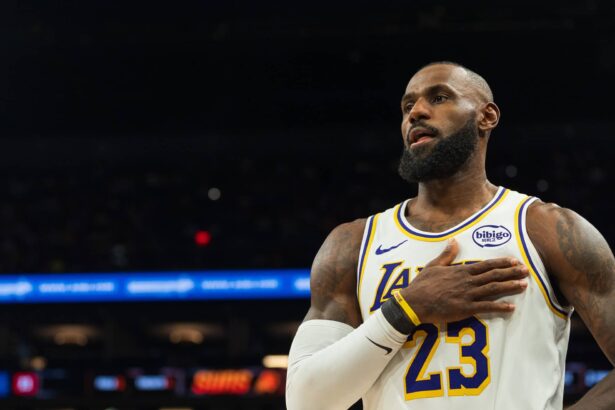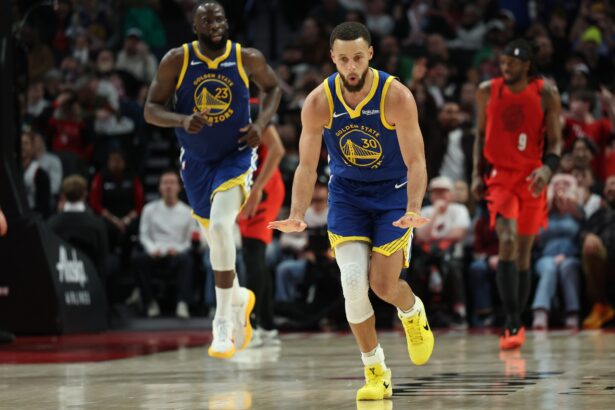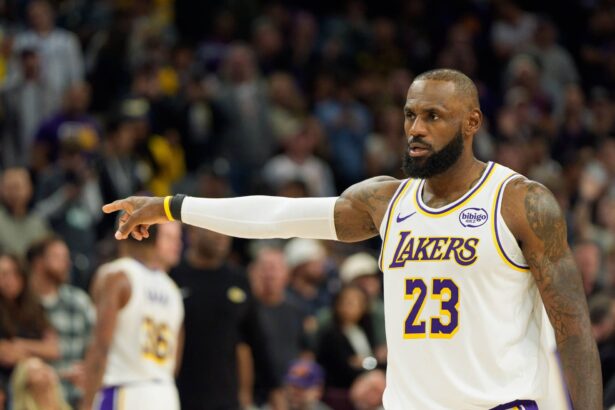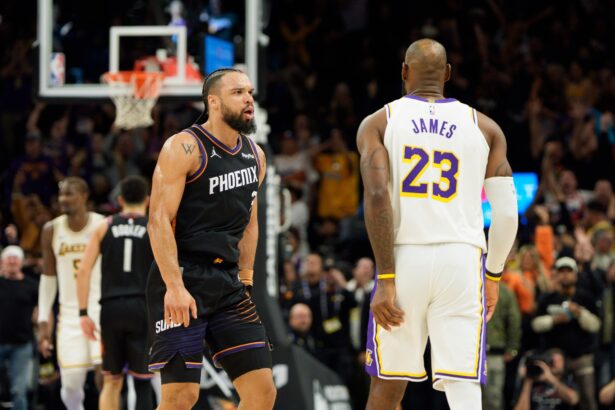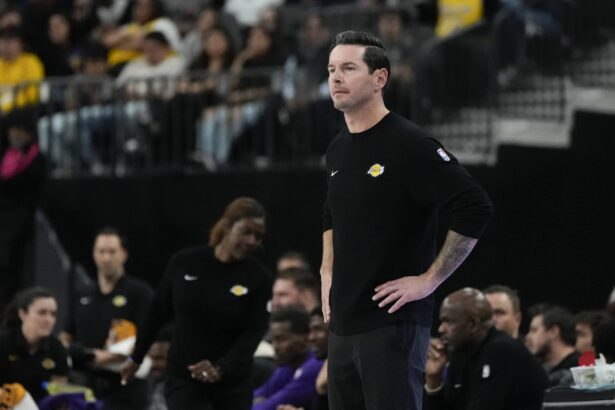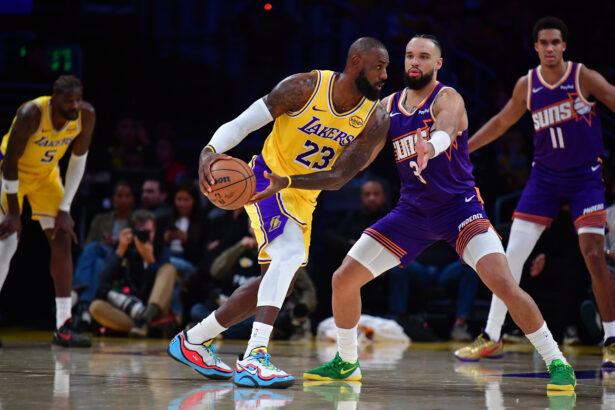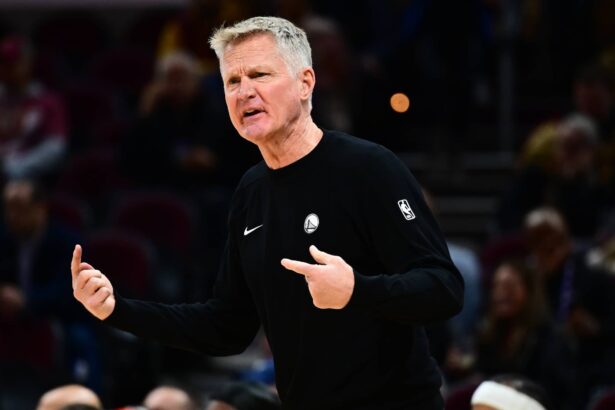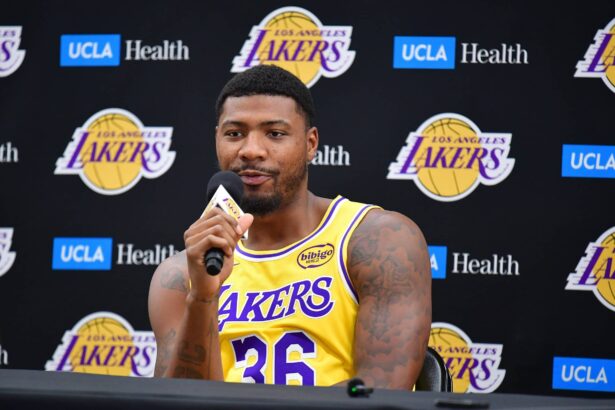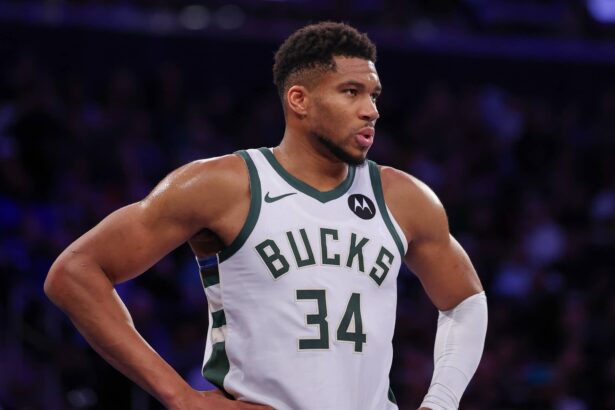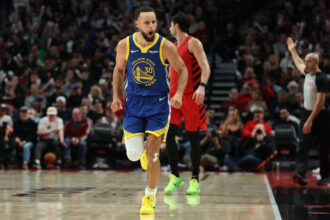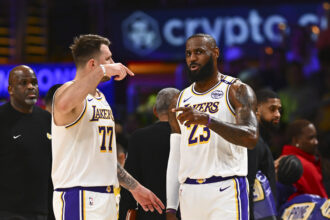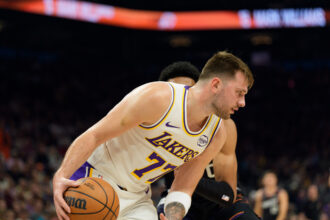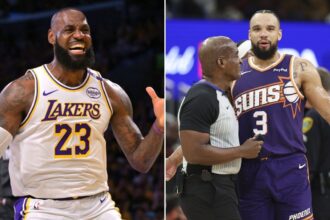The NBA always goes through changes in every generation, whether it is the type of players coming into the league or the change of commissioner’s directions. More specifically, changes happen around the NBA because rules tend to change throughout time to minimize the impact of extremely dominant players or encourage greater audience viewership. We have seen the effect of some strict rule changes that have likely changed the NBA for the foreseeable future.
- 1947: Banning Zone Defense
- 1951: Lane Expanded From 6 Feet To 12 Feet
- 1954: Implementation Of The Shot-Clock
- 1964: Lane Expanded From 12 Feet To 16 Feet
- 1979: Banning Hand-Checking
- 1980: The Birth And Evolution Of The Three-Point Line
- 1991: Implementing A Flagrant Foul Rule
- 1995: Enforcing Hand-Checking Rules And Bringing 3-Point Line Closer
- 2002: Legalizing Zone Defense
- 2005: Hand-Checking Was Strictly Forbidden
- 2022: Removing Flopping From The Game
- Next
- NBA Players With The Most Finals Appearances: Bill Russell Is The Lord Of The Rings
- Top 10 NBA Players In Player Efficiency Rating: Michael Jordan Is The GOAT
- The Blockbuster Trade The Los Angeles Lakers Rejected: Kobe Bryant Almost Played For The Bulls
- 7 Most Skilled Scorers In NBA History: Michael Jordan And Kobe Bryant Are Two-Of-A-Kind
- Highest Salary By Season (1984-2026): Kevin Garnett, Kobe Bryant, And Steph Curry Dominate The List
We have collected the 11 most important rule changes that altered the NBA landscape at their respective moments in time. Early on, dominant big men were finding it too easy to play the game and rules began to minimize their impact. Later, skilled guards and forwards were allowed to express themselves to bring offense into the limelight. These days, the game is mainly offense-driven. Without further ado, here are the 11 most important rules that changed NBA basketball forever with help from the Twitter posts of “Refs Venue”.
1947: Banning Zone Defense
Effect: Preventing heavy defensive resistance to encourage dominance by superstar players
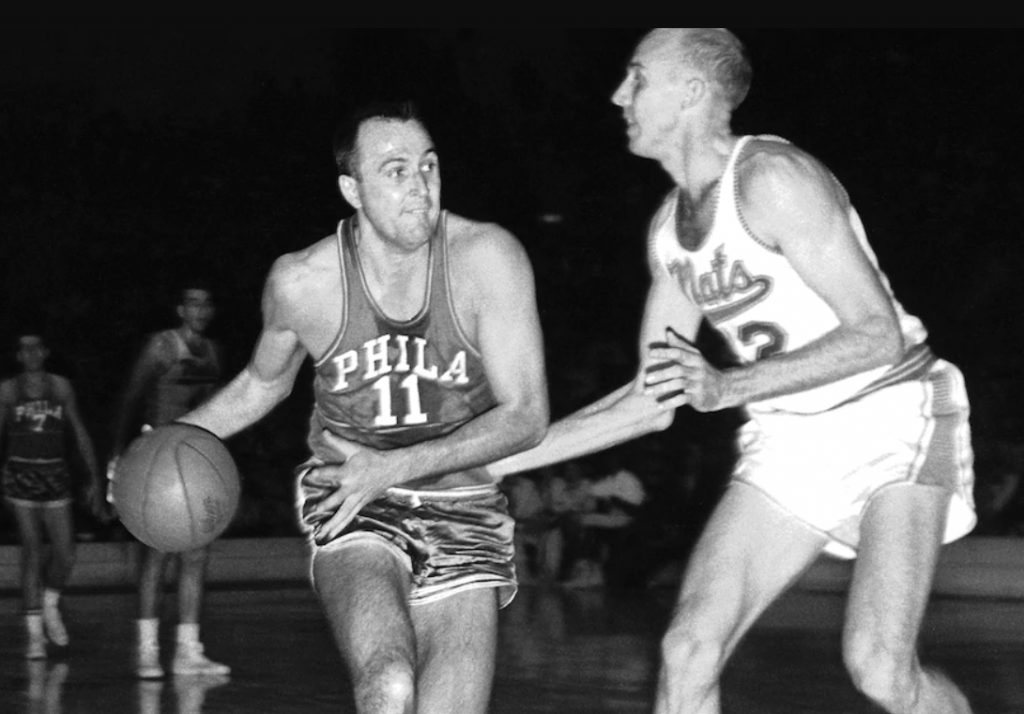
The NBA in the late 1940s was completely different than today, and it is much more than black-and-white television signals. Instead, it was the free-roam style of play by players who could dribble as much as they wanted and get any shot they wanted. But in 1947, the NBA made a change to ban zone defense.
The reason was simple: allow dominant players to express themselves. The likes of Neil Johnston, Dolph Schayes, Paul Arizin, and Bob Pettit all took advantage and began dominating their era until another rule change began to minimize their impact. The league realized that it was not so simple to just ban a defensive scheme, and implemented a way to increase the size of the lane.
1951: Lane Expanded From 6 Feet To 12 Feet
Effect: Minimize the impact of superstar big men, mainly curbing George Mikan’s impact to encourage guard and wing play
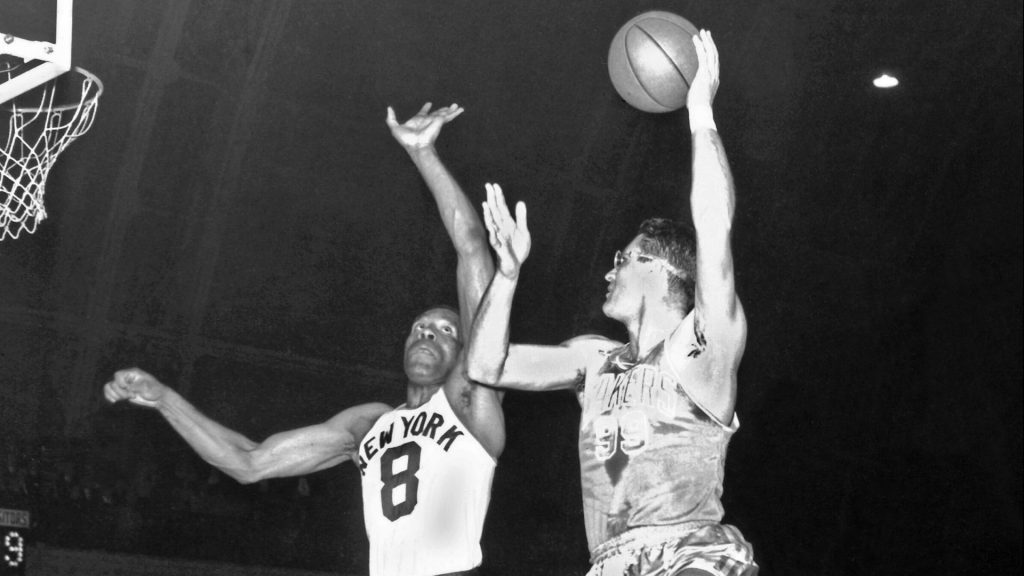
George Mikan was the man who took the NBA by storm in the 1950s and is regarded as the NBA’s first true superstar. There were great players in the NBA (Schayes, Arizin, Pettit) at that time, but Mikan was truly a once-in-a-generation talent. The big man won 3 scoring titles, a rebounding title, and made 4 All-Star Teams in 6 years with the Minneapolis Lakers.
To curb the sheer dominance of Mikan, the league expanded the lane to double its length. The idea was to give more power and ability to the wings, players that can help defend dominant centers and control the paint a bit more. Mikan and other big men were controlling the paint every game, and expanding the lane began to slow that down.
1954: Implementation Of The Shot-Clock
Effect: Quicken the pace of the game and encourage more scoring and points on the board
League average PPG in 54: 79.4 PPG
League average PPG in 55: 93.1 PPG
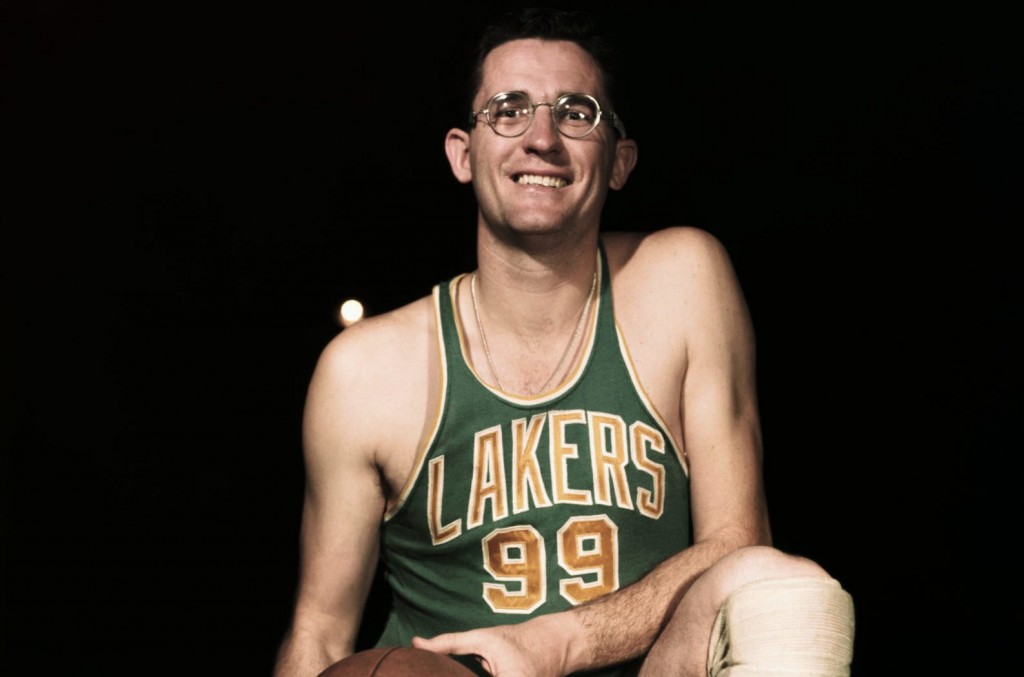
With the likes of George Mikan controlling the paint and taking his time to get his shots off, the league knew a major change needed to happen. Teams were taking too long to get into their offensive sets, and the pace of play was being stifled by a lack of urgency at times. The NBA stepped in, adding an extremely valuable addition.
The shot-clock changed the game because it quickened the pace of play and teams began to get shots up and score more points. The results were astonishing because, after the rule change, the league PPG average jumped from 79.4 PPG to 93.1 PPG. That is a staggering change that goes to show: athletes need to be pressured slightly in order for games to be more attractive.
1964: Lane Expanded From 12 Feet To 16 Feet
Effect: Giving more power to perimeter players by curbing the individual dominance of Wilt Chamberlain
League average PPG in 1964: 111.0
League average PPG in 1966: 115.5
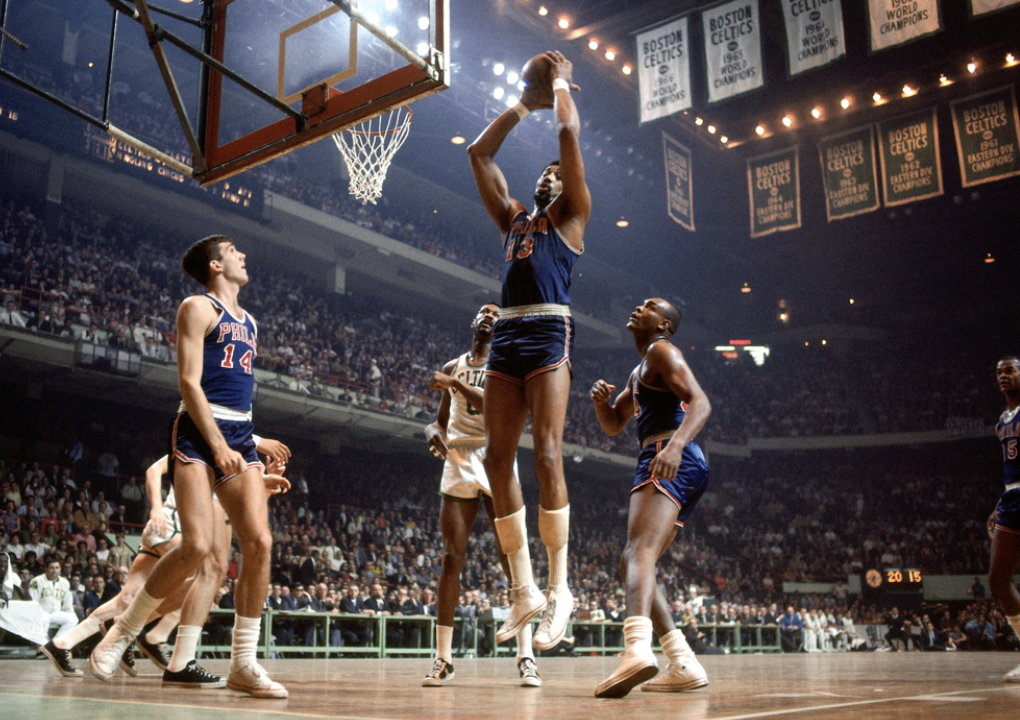
After George Mikan, Wilt Chamberlain took dominance to a different level. In his rookie season, Wilt averaged 37.6 PPG and 27.0 RPG and would go on to average over 34 PPG and 22 RPG the next 5 seasons. In order to curb Chamberlain’s sheer dominance, the NBA expanded the lane another 4 feet.
Wilt was simply stronger, taller, faster, and stronger than every player and found it incredibly easy to grab every rebound off the rim and score a ton of points. Chamberlain scored 100 points in a single game and grabbed 55 rebounds in another game. Averaging 50.4 PPG in a single season was ridiculous, and the NBA made a change to slow down the insanity.
1979: Banning Hand-Checking
Effect: Lessen physicality to allow offensive superstars more freedom to score at higher efficiency
League Average PPG in 1978: 108.3 PPG on 46.9% FG
League Average PPG in 1979: 110.3 PPG on 48.5% FG
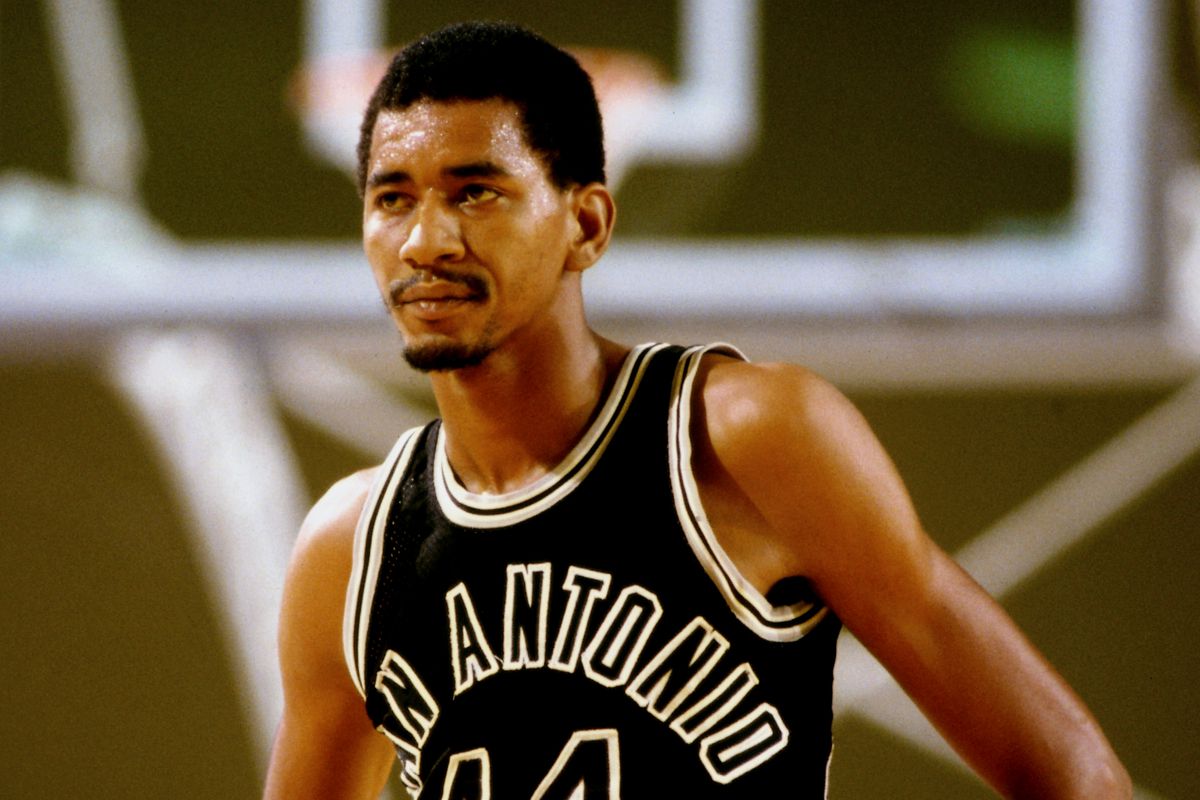
Hand-checking was a major part of playing defense back in the day, as players relied on their defensive IQ and physical ability to get stops against dominant scorers in the league. George Gervin was kicking off his reign as a scoring machine in 1978, winning his first scoring title and winning his second in 1979.
This rule change benefitted Gervin greatly because he would win scoring titles in 1980 and 1982 as well. The hand-checking rule was implemented to stop being aggressive to offensive players, and the pace became quicker and more excited for NBA fans to follow. Another major rule change soon followed, making offense all the more exciting.
1980: The Birth And Evolution Of The Three-Point Line
Effect: A complete revolution aimed towards offense and high-scoring games
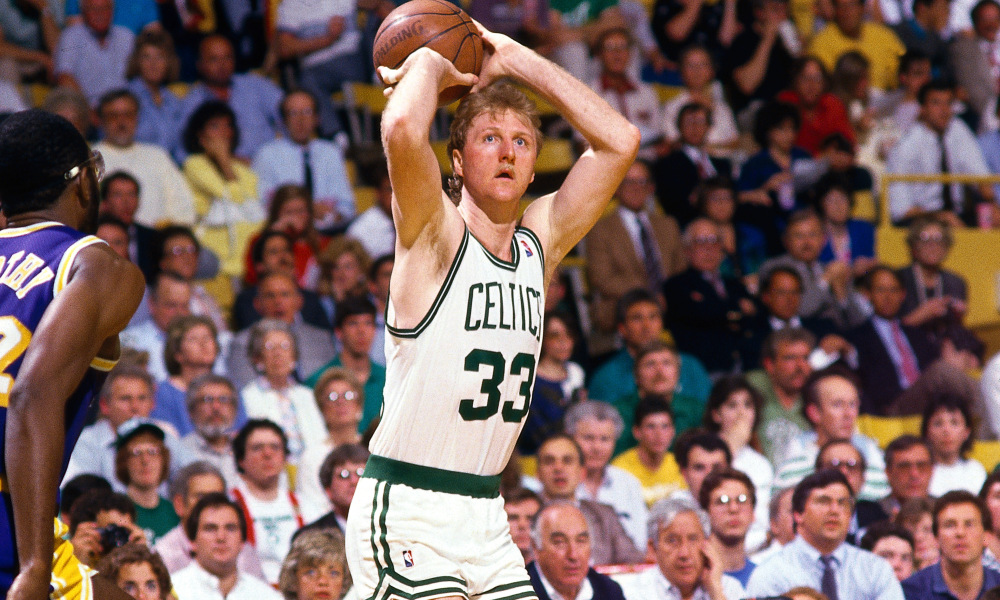
After hand-checking was being monitored and became essentially “banned”, the three-point line changed the game. This rule allowed gifted shooters such as Larry Bird, Reggie Miller, Steve Kerr; and most recently Ray Allen and Stephen Curry, the chance to do what they do best.
The goal of the NBA was simple: encourage more offense and quicken the game to suit some all-time great players playing in that era. Without this rule change, we will probably have never seen Stephen Curry take the NBA to another level and high-octane offenses would have never existed.
1991: Implementing A Flagrant Foul Rule
Effect: Focus more on maintaining player safety, and punishing excess physicality in favor of offensive players
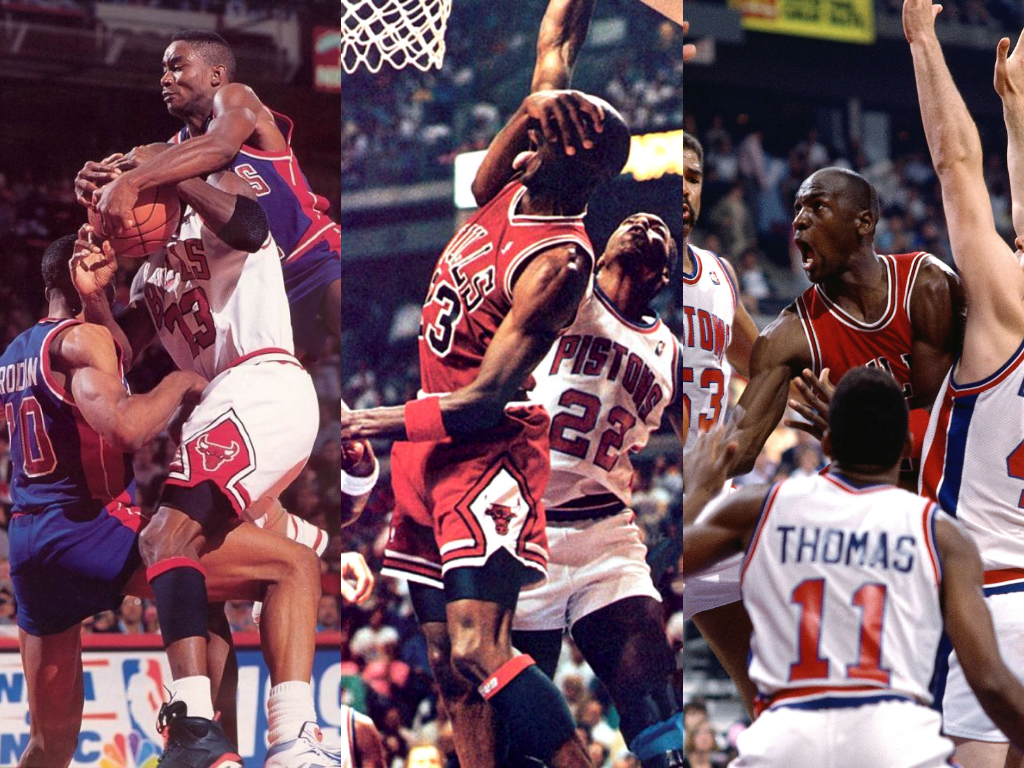
Players were beating each other up in the 1980s, so the league had to step in to control the amount of physicality in the game. After all, while basketball is a physical game, there is a lot of finesse about it. Anyone looking to enjoy raw physicality should probably take up watching the NFL or National Rugby League.
With the flagrant foul rule in place, defensive players (hint Bill Laimbeer) no longer have the freedom to hack players driving to the basket anymore. Rather, there were rules in place to start protecting players from excessive force and encourage more beauty in the game. The 90s began implementing a ton of rule changes and decreasing physicality was certainly one of them.
1995: Enforcing Hand-Checking Rules And Bringing 3-Point Line Closer
Effect: Improve 3-point efficiency and once again encourage offensive players to score from the perimeter
League average 3PT% in 1994: 33.6%
League average 3PT% in 1995: 35.9%
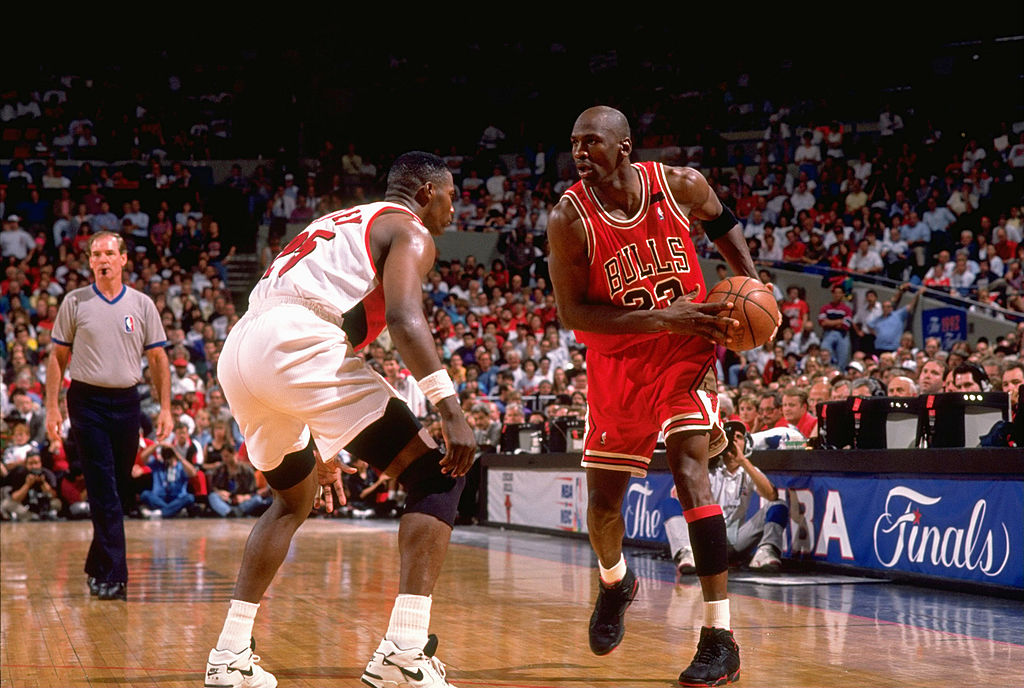
Hand-checking was “banned” in 1979, but it was greatly enforced in 1995. Once again, the NBA wanted more offense because there were some incredible offensive players at the time. Michael Jordan was dominating the league and bringing viewers from all over the world, so removing the punishment he took was key to getting more points on the board.
The same treatment was bestowed on other great offensive players, but the 3-point line started becoming more prominent as well. The arc was shortened, allowing for guys like Reggie Miller a chance to dominant the game as slender athletes with a shooter’s gift. Guys started shooting better, and the NBA started becoming more attractive to watch.
2002: Legalizing Zone Defense
Effect: Original aim was to improve passing and ball movement, but the underlying aim was to slow down the physical dominance of Shaquille O’Neal
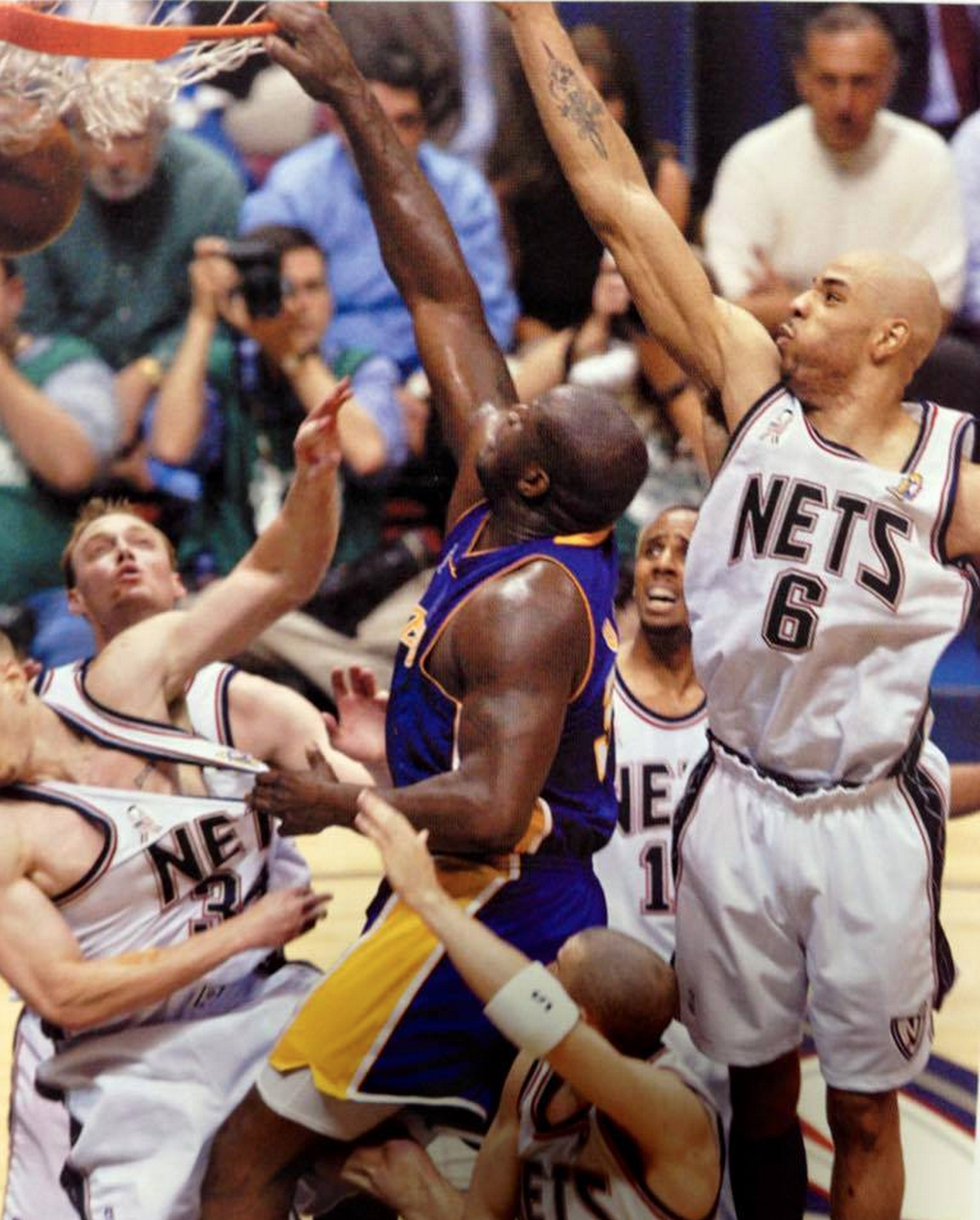
In the early 2002, Shaquille O’Neal was simply destroying the league. The big man was putting up monster double-doubles every night and for the first time since Wilt Chamberlain, there was a center who was just unfathomably dominant on a physical level. No player could match with O’Neal’s sheer size, and changes were needed to curb the dominance of a single man.
While the league implemented zone defenses again to encourage ball movement and passing, the underlying reason was to slow down Shaq’s physical dominance. Zone defense gave teams chances to slow down O’Neal and other big men, while also encouraging higher IQ play at the expense of pace and scoring.
2005: Hand-Checking Was Strictly Forbidden
Effect: With zone defense back in the game, hand-checking was even more strictly monitored to encourage more offense again
League Average in 04: 93.4 PPG/43.9 FG%/102.9 DRTG
League Average in 05: 97.2 PPG/44.7 FG%/106.1 DRTG
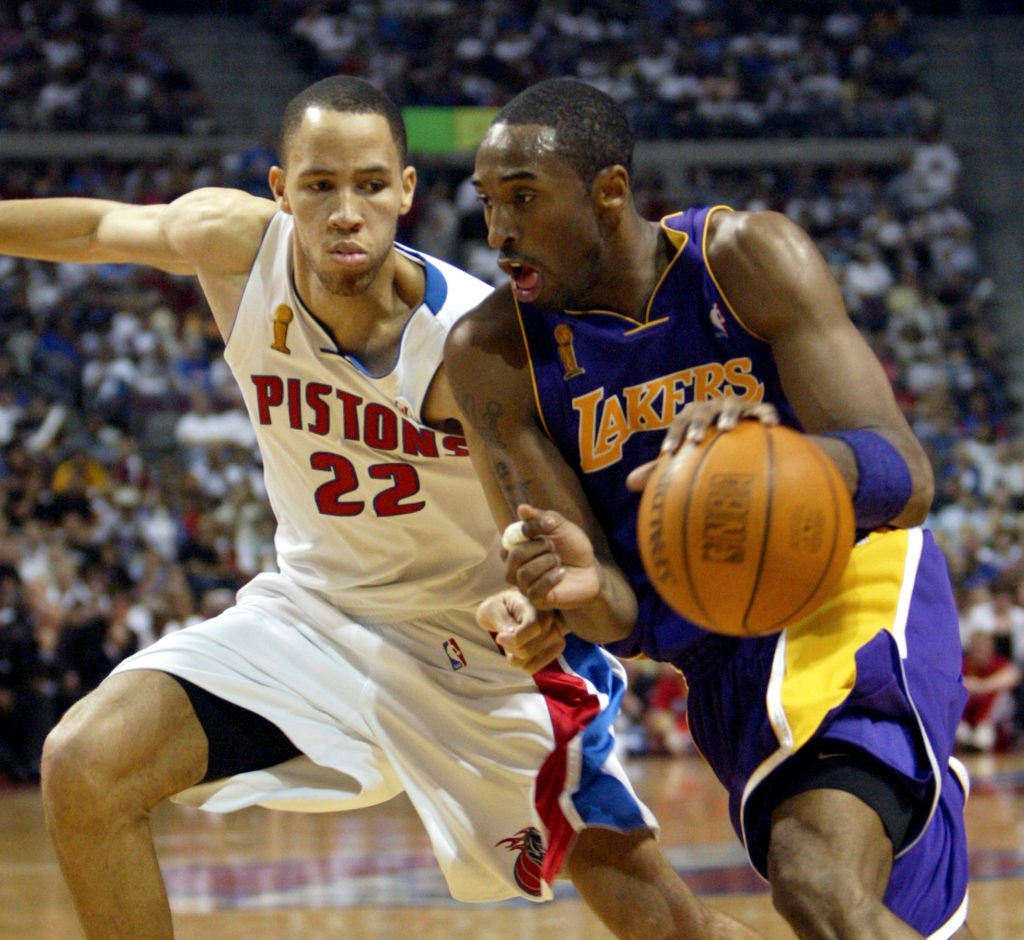
With zone defenses in full effect, teams could not score as freely as they did before. Players were playing physical defense, big men were not as effective, and offensive superstars were not allowed to express themselves. In 2005, hand-checking was strictly forbidden, which gave the offensive players the space to bring the offense back into the game.
One of the most prominent names calling or a change was Mark Cuban who didnt like how the Pistons took advantage of the rules to defend Kobe in the finals. Maybe backfired
League Average in 04: 93.4 PPG/43.9 FG%/102.9 DRTG
League Average in 05: 97.2 PPG/44.7 FG%/106.1 DRTG
2/2 pic.twitter.com/Fu646gsbQI
— 𝓡𝓮𝓯𝓼 𝓥𝓮𝓷𝓾𝓮 (@SFsGOAT) October 16, 2021
Great players such as Kobe Bryant, LeBron James, Carmelo Anthony, and Tracy McGrady went ballistic on offense and put up insane scoring numbers. For the first time since the 1990s, the NBA was wild on offense and this era was one of the most memorable for NBA fans. This rule change also led us to the point we are in now.
2022: Removing Flopping From The Game
Effect: Relaxed rules began encouraging flopping for cheap fouls so fouls will not be called as much heading into the 2022 NBA season
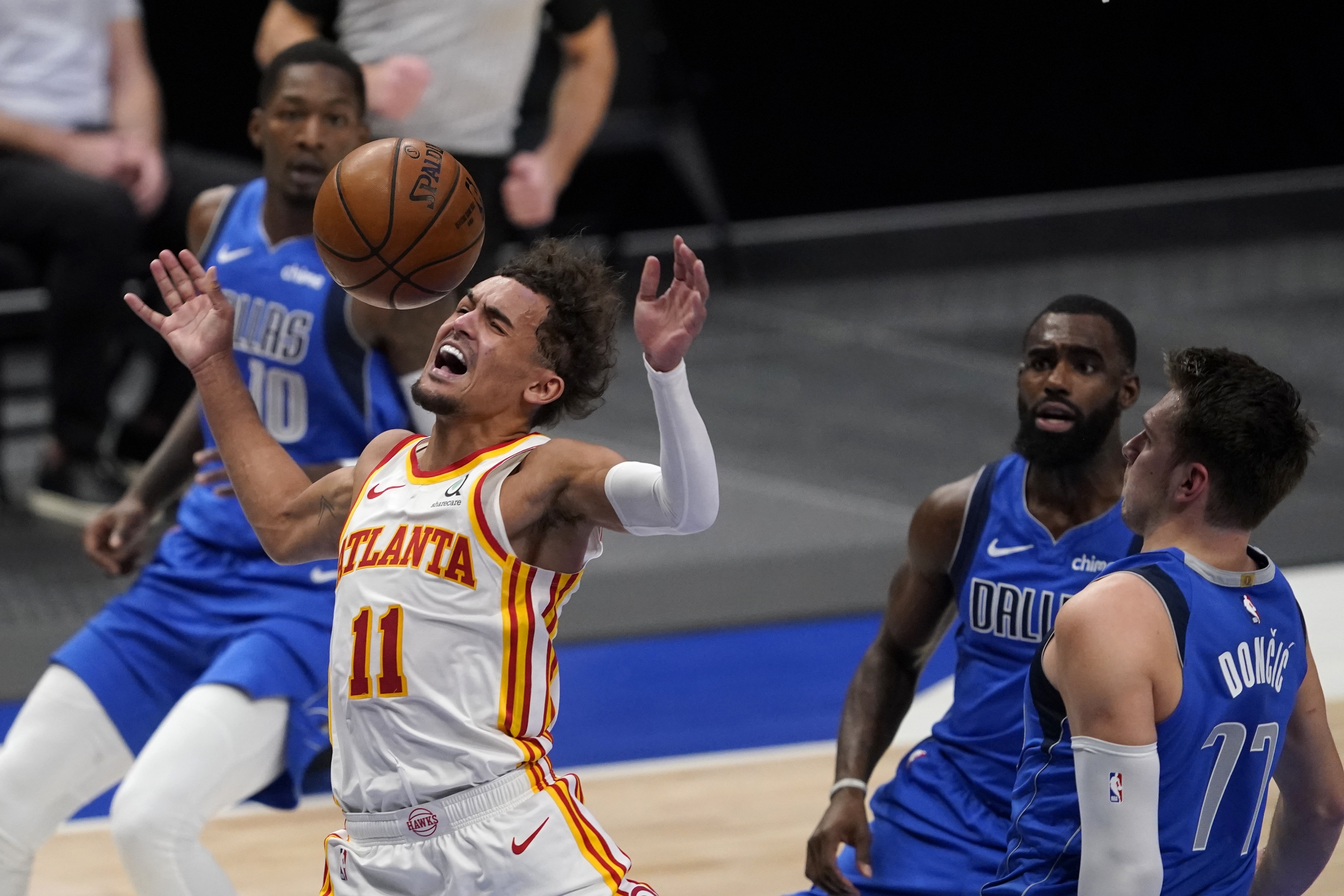
With hand-checking out of the game and smaller rules implemented to favor the offensive players, the rise of spacing and three-point shooting completely changed the NBA. Stephen Curry was mainly responsible because his shooting was destroying teams who were not prepared for a player taking over 10 3’s a game. Klay Thompson was another innovator, and the presence of Kevin Durant made the NBA a shooter’s league. But there was one problem: referees were falling for player flopping, especially on jump shots.
Players such as James Harden and Trae Young began drawing fouls on shots with very limited contact and were dominating the game in their own way. In the 2021-2022 season, flopping is strictly forbidden and the clarification of offensive fouls is making the game fun to watch without constant foul calls. Offensive players can do what they do best, and fans do not have to worry about silly fouls any longer which should place the NBA in a great place going forward.

